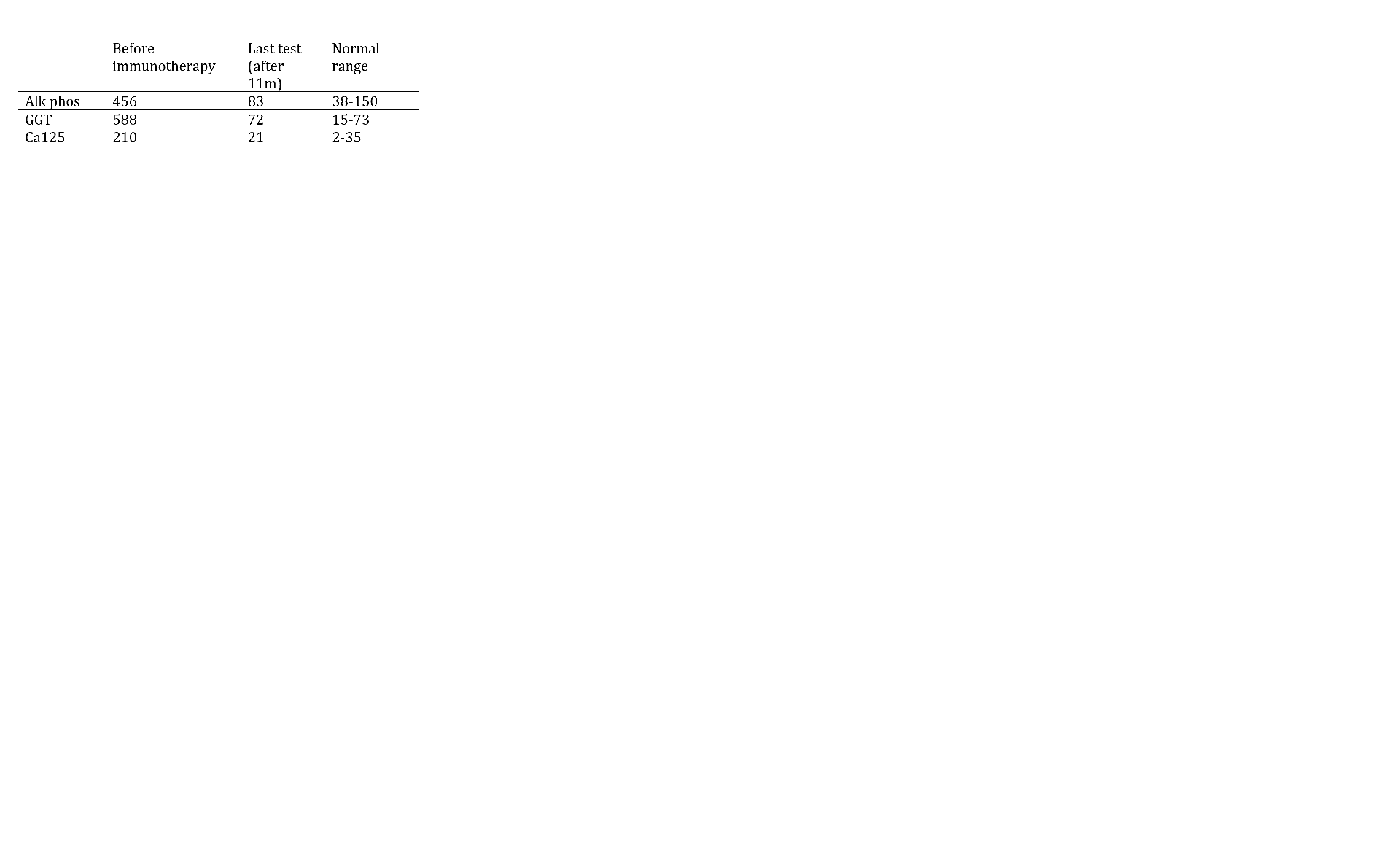
An Exceptional Response to Immunotherapy Doublet in Combined Hepatocellular Carcinoma-Cholangiocarcinoma
We present here a case of a previously healthy 67-year-old male. He presented with severe abdominal pain and weight loss of 25%. Liver function tests, alpha-feto protein (AFP) and Carbohydrate antigen 19-9 (CA19-9) were within normal limits, and CA125 was 5 times upper normal limit (ULN). Computed tomography showed liver masses and enlarged retroperitoneal lymph nodes. Biopsy from a liver mass showed Combined Hepatocellular Carcinoma (HCC)-Cholangiocarcinoma (CC) (CHC).
This a rare tumor, with an incidence of less than 10% of primary liver tumors. In whole exome analysis, there were numerous ubiquitous mutations shared by HCC and CC that suggest the monoclonal (bipotent cell) origin. Mutated genes identified were speculated to contribute to distinct differentiation of HCC and CA. EpCAM was highly expressed, implying the stemness.
There are no guidelines or randomized trials regarding treatment. In an analysis of 36 patients who were treated with chemotherapy, the progression-free survival was 2.8 months, with an overall response rate of 5.6%. Targeted agents had minimal effect on survival.
In our case, extensive testing was performed. No genomic alterations were identified, tumor mutational burden was low and microsatellite status was stable. 7 of 9 immune checkpoint genes were overexpressed. Also, there was a variant in CDK12 which was shown to be associated with elevated neoantigen burden and may predict benefit from immune checkpoint therapy.
The patient began immunotherapy with ipilimumab and nivolumab for 4 treatments followed by nivolumab, which he is continuing reaching 14 months from diagnosis. No treatment side effects have been noted otherwise than hypothyroidism and Addison`s disease which are being treated with hormonal replacements.
His clinical response was dramatic, he regained all the lost weight, and discontinued high dose opiate treatment. ECOG performance status improved from 2 to 0. Repeated PET-CT showed all tumor sites decreased in size and uptake, ca125 decreased from 6 times ULN to normal, alkaline phosphatase from 3 times ULN to normal, LDH which was 8 times ULN decreased by 75%.
To summarize, we present here an exceptional case of a rare tumor, where the patient had a clinical, laboratory and radiological response and a significant improvement in quality of life, suggesting that these tumors are sensitive to immunotherapy. To our knowledge no published cases have been treated with immunotherapy doublet.

Powered by Eventact EMS